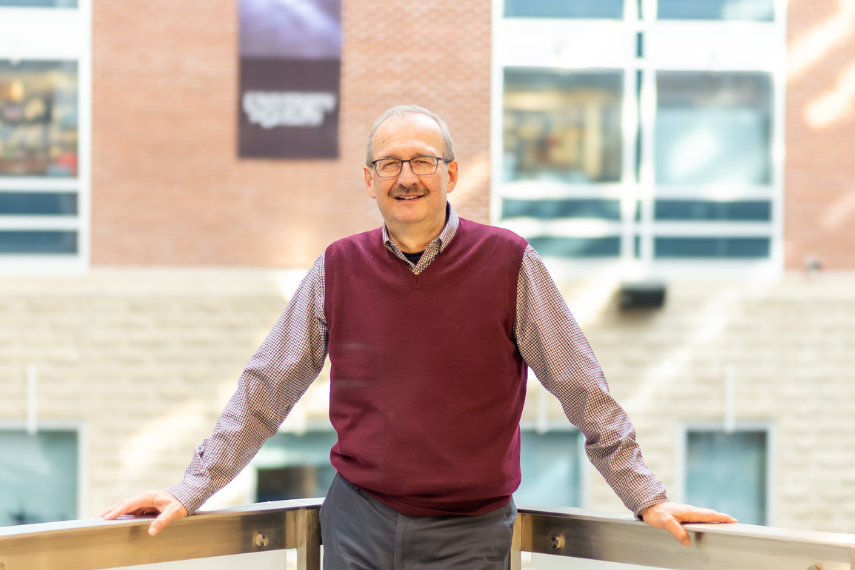Breathing New Life into Soil: The Bioventing Breakthrough

At the University of Guelph, Dr. Richard G. Zytner, an environmental engineering expert in the School of Engineering, and his team are working in the field of soil bioremediation. Zytner is leveraging his expertise and previous research on the behaviour of contaminants in this latest study on an advanced bioventing model that significantly enhances soil clean-up processes.
Innovative Approach to Tackling Petroleum Hydrocarbons
The latest research revolves around bioventing, an eco-friendly method where air and nutrients are injected into polluted soil to stimulate microbial action and effectively consume the pollution. Richard’s team developed a special three-dimensional model, similar to a detailed map, that helps us understand how the added air moves in different layers of the ground, especially in areas where water and substances like oil, which do not mix with water, are trapped in the soil. The model uses what we know about how microbes eat pollution to predict how fast they can clean the soil. Plus, it is designed to work perfectly with the unique qualities of each area of land.
"People can now predict the degradation rate, then predict how long it would take to remediate the site using Bioventing,” says Zytner. “This offers a powerful tool for all stakeholders, environmental consultants, researchers and regulators."
The Model: A Blend of Mathematical Precision and Practicality
Zytner’s approach to integrating computational modelling with environmental engineering is not just innovative but necessary for modern environmental challenges and when considering sustainable solutions for the future. They also wanted the model to work with the unique qualities of different types of soil.
"The more complex you make these models by incorporating more data and providing better predictions, you need more computing horsepower,” says Zytner. “One of the biggest challenges was identifying what modelling language and the platform that we should use."
 The team chose OpenFOAM- a tool that provided the required computational capabilities for complex models. The research team, including Ph.D. student Mohammad Khodabakhshi Soureshjani (pictured), crafted a sophisticated model to predict bioventing outcomes. This innovative model holds significant potential in facilitating the development of efficient strategies for the remediation of petroleum hydrocarbon-contaminated soils, crucial for environmental sustainability.
The team chose OpenFOAM- a tool that provided the required computational capabilities for complex models. The research team, including Ph.D. student Mohammad Khodabakhshi Soureshjani (pictured), crafted a sophisticated model to predict bioventing outcomes. This innovative model holds significant potential in facilitating the development of efficient strategies for the remediation of petroleum hydrocarbon-contaminated soils, crucial for environmental sustainability.
Envisioning a Real-World Impact for a Cleaner, Safer Environment
The work was developed in collaboration with consulting firms, to support practical applications. The resulting models provide significant data for consulting engineers, aiding in the accurate prediction of degradation rates and remediation timelines. This not only informs the consulting world but also assists regulatory authorities in risk assessment and decision-making related to contaminated sites.
"Our goal is to make soil remediation more predictable and efficient, turning contaminated sites back into safe, usable land," Zytner said.
By accurately predicting the degradation of contaminants, Zytner’s research offers a beacon of hope for restoring contaminated lands effectively and naturally.
This story was written by Mehran Bozorgi as part of the Science Communicators: Research @ CEPS initiative. Mehran is a PhD candidate in the School of Engineering under Dr.s Syeda Humaira Tasnim and Shohel Mahmud. His research focus is on the development of solar-assisted cooling systems to achieve thermal comfort conditions in buildings in different climate conditions.
Funding Acknowledgement: The research was supported by the Natural Science and Engineering Research Council (NSERC) of Canada Discovery Grant [400-913] and a University of Guelph General Purpose Research Account [070-669].
Reference: M. Khodabakhshi Soureshjani, H. J. Eberl, and R. G. Zytner, “Three-Dimensional Model for Bioventing: Mathematical Solution, Calibration and Validation,” Math. Comput. Appl., vol. 29, no. 1, 2024, doi: 10.3390/mca29010016.